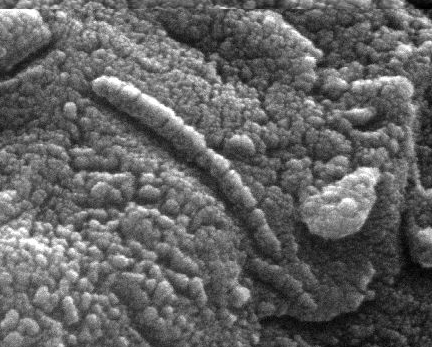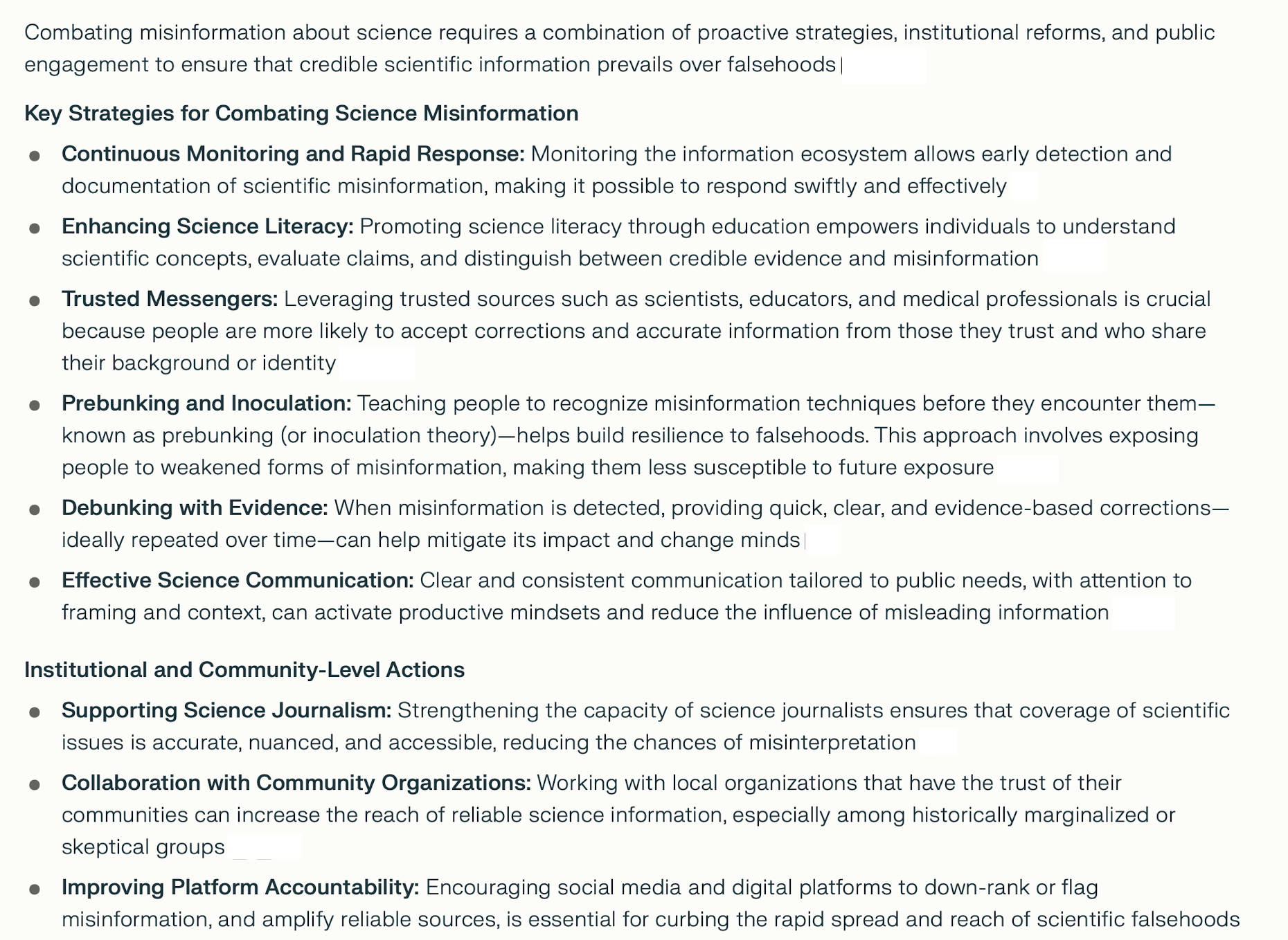Mike Meetz and Sam Wormley team up to provide a lively
discussion with OLLI members about Science In The News.
A deep understanding of science is not required to share
and discuss recent Science In The News. Neil deGrasse Tyson
on Scientific Literacy.
LATEST NEWS
https://www.sciencealert.com https://www.sciencealert.com
https://phys.org https://sciurls.com/?q=phys
https://www.nature.com https://sciurls.com/?q=nature
https://www.nytimes.com/science https://sciurls.com/?q=nytimes%20science
https://www.quantamagazine.org https://sciurls.com/?q=quantamagazine
https://www.sciencenews.org https://sciurls.com/?q=sciencenews
https://www.scientificamerican.com https://sciurls.com/?q=scientificamerican
OLLI Science in the News & Your Recommendations
For Thursday 9/25/2025
⓵ NECLEAR POWER
Gary L. Willett writes: Huge electronic data centers are
being built, and they are said to use a huge amount of energy
and water. The use of nuclear energy to power them is being
promoted. I would like to learn about nuclear energy
production advances. I also wonder what is going to happen to
the earth's fresh water supply.
Why Thorium is About to Change the World | Undecided
https://www.youtube.com/watch?v=bz4aTO6M4Ho (17+ min)
Thorium reactors are like the solid-state batteries of
nuclear power: vastly superior, yet forever on the horizon.
But now, a Danish company is closer than ever to turning them
into a reality. These aren't just thorium reactors - they're
small modular reactors, designed to function as shipping
container-sized, self-maintaining batteries that operate
reliably for years. So, how is this company tackling such an
ambitious engineering challenge? When might commercial
thorium reactors finally arrive? And is thorium the missing
piece in the clean energy puzzle?
We just broke ground on America's first next-gen nuclear facility
https://www.gatesnotes.com/Wyoming-TerraPower-groundbreaking
TED Talk: Apple's promise to become carbon neutral by 2030 (5+ min)
2020t-lisa-jackson-liz-ogbu-003-1177679e-840b-498c-b9a1-5000k.mp4
Under the leadership of Lisa Jackson, Apple's environment and
social VP and former head of the EPA, the company is already
carbon neutral within their own corporate offices, research
centers, data centers, and retail boundaries. By 2030, Apple
hopes to extend carbon neutrality to their supply chain and
consumers. In conversation with urbanist and spatial justice
activist Liz Ogbu, Jackson shares thoughts on leadership,
tech, the environment and building a green economy.
Motivation
1. Reduces Operational Cost
2. Provide Greener Investor Alternatives
3. Sustainable Operations - how product is designed, made,
shipped, used, and recycled
4. Leadership - Reducing & Reversing Global Warming Causes
5. Leadership - Sustainable Global Economy
Lazard's Levelized Cost of Energy Analysis—Version 18.0
lazards-lcoeplus-june-2025.pdf
Lazard's Levelized Cost of Energy Analysis—Version 18.0 finds
that, for the 18th consecutive year, utility-scale solar and
onshore wind remain the most cost-competitive sources of
new-build electricity generation in the U.S. on an
unsubsidized basis. The report provides detailed, comparative
cost analyses of various generation technologies and energy
storage systems, incorporating recent economic trends,
sensitivities to capital and fuel costs, and the role of
federal tax incentives.
It also highlights continued declines in the costs of
renewables, demonstrates how they compare favorably to the
marginal operating costs of conventional technologies, and
covers methodological details in an extensive appendix.
Deep-Sea Desalination Pulls Fresh Water from the Depths
https://www.scientificamerican.com/article/deep-sea-desalination-pulls-drinking-water-from-the-depths/
Deep-Sea Desalination
Plans are underway for the world's first large-scale deep-sea
desalination plant off the coast of Norway. The high pressure
of the ocean depths will force seawater through filters. On
land, it's extremely costly to pressurize water through
reverse osmosis. One company developing the technology says
it uses 40 to 50 percent less energy than conventional
desalination plants-and it can be built with modular systems
that can be deployed to many deep-sea locations without
bespoke engineering.
How it works:
Reverse osmosis pods are submerged to depths of around 500
meters (1,600 feet), where immense hydrostatic pressure does
the hard work of separating water from salt. Purified water
is then pumped back to shore. Operating on the seafloor has
other benefits, too. This region harbors fewer bacteria and
other microorganisms compared with shallower water, and there
is little local variation in temperature or pressure.
Multiple prototypes of such systems are already at work.
The challenges:
Though it may be more efficient than surface desalinators,
deep-sea plants are still more expensive than surface
ones-the filtered water needs to be pumped back up to the
surface. Most seaside cities and towns are surrounded by
continental shelves where the water is not deep enough for
the process, so the plants must be placed near communities
adjacent to continental drop-offs.
What the experts say:
Subsea desalination could go mainstream and supply water to
entire cities, says Nidal Hilal, founding director of New
York University's Water Research Center in Abu Dhabi. But
"reaching true city scale will take time, conceivably a
decade or more."
⓶ GOLD IN THEM THAR CORES
Bev Clark writes: So we are a wealthy planet at our core! My mind
thinks of fantasies of movies trying to access the core
without blowing us to bits etc. Without sampling how do we
know the core is gold?
Earth's Core Holds a Vast Reservoir of Gold, And It's Leaking Toward The Surface
https://www.sciencealert.com/earths-core-holds-a-vast-reservoir-of-gold-and-its-leaking-toward-the-surface
Summary
Evidence for gold in the Earth's core comes from a
combination of geochemical analysis, isotope studies, and the
observation of trace precious metals in volcanic rocks. Most
of Earth's gold, along with other dense metals, sank to the
core during the planet's early formation. While nearly all of
this gold remains locked away and unreachable, recent
research has provided direct evidence that at least some gold
is slowly "leaking" from the core into the surrounding
mantle, and occasionally to the surface, through volcanic
activity.
Scientists detected trace amounts of ruthenium-a precious
metal with a similar core affinity as gold-with a unique
isotopic signature in volcanic rocks from Hawaii. Since this
isotopic composition matches what is expected for core
material, it confirms that deep mantle plumes, which can
originate from the core-mantle boundary, sometimes carry gold
and other core-derived metals up to the crust. The signal is
extremely faint, suggesting the amount is tiny, but it is a
decisive indicator. This evidence, along with other
geochemical and isotopic studies, demonstrates that there is
indeed gold in the Earth's core, and a very small fraction of
it is making its way towards the surface over geological
timescales.
⓷ INTERESTING METEORITE
James W. Christensen writes: President Clinton had announced
that NASA had found a meteorite in Antartica that showed
signs of possible life. I had opportunity to get a close look
at this chunk of rock looking through the glass of a glove
box. Clinton's announcement rattled many people at NASA. I
think the reluctance to make a strong statement about
possible life relates back to Clinton and a desire by NASA to
hold the sample in their hand before making a statement that
answers the fundamental question of if we are the only life
in the universe.
 https://apod.nasa.gov/apod/ap960817.html
When the above meteorite was found in Antarctica, it was
considered unusual because of its grey color. So far, about
12 Martian meteorites of similar mineral compostion have been
found. One of these contains minute pockets of gases
identical in isotopic composition to the Martian atmosphere
as determined from the Viking measurements - implying the
rocks indeed originated on Mars. These Martian meteorites are
typically 1.3 billion years old or less, however, the one
containing the potential microfossils appears to have an age
of about 4.5 billion years.
https://astrobiology.nasa.gov/news/an-update-from-alh84001/
New research funded by elements of the NASA Astrobiology
Program shows that the organic material in the famous Martian
meteorite ALH84001 was not formed biologically, but rather by
geochemical interactions between water and rock.
⓸ AUTISM AND TYLENOL
No strong evidence for autism-Tylenol link
https://www.nature.com/articles/d41586-025-02876-1?
https://apod.nasa.gov/apod/ap960817.html
When the above meteorite was found in Antarctica, it was
considered unusual because of its grey color. So far, about
12 Martian meteorites of similar mineral compostion have been
found. One of these contains minute pockets of gases
identical in isotopic composition to the Martian atmosphere
as determined from the Viking measurements - implying the
rocks indeed originated on Mars. These Martian meteorites are
typically 1.3 billion years old or less, however, the one
containing the potential microfossils appears to have an age
of about 4.5 billion years.
https://astrobiology.nasa.gov/news/an-update-from-alh84001/
New research funded by elements of the NASA Astrobiology
Program shows that the organic material in the famous Martian
meteorite ALH84001 was not formed biologically, but rather by
geochemical interactions between water and rock.
⓸ AUTISM AND TYLENOL
No strong evidence for autism-Tylenol link
https://www.nature.com/articles/d41586-025-02876-1?
 "Don't take Tylenol," was the blunt advice of US President
Donald Trump during an announcement that the US Food and Drug
Administration will slap a new warning label on the
painkiller (also known as acetaminophen and paracetamol) that
flags a "possible association" with autism in children. But
there is a lack of strong evidence to back up the claim. "The
evidence does not support a causal link between acetaminophen
or vaccines and autism," says clinical teratologist Sura
Alwan, the executive director of PEAR-Net Society, a
nonprofit advocating for maternal fetal health and research.
There are few safe alternatives to treat pain and fever
during pregnancy, so advising against it is "bound to
increase fear in pregnant women", says Helen Tager-Flusberg,
a psychologist who studies autism. "It is absolutely not
grounded in the scientific findings."
"Don't take Tylenol," was the blunt advice of US President
Donald Trump during an announcement that the US Food and Drug
Administration will slap a new warning label on the
painkiller (also known as acetaminophen and paracetamol) that
flags a "possible association" with autism in children. But
there is a lack of strong evidence to back up the claim. "The
evidence does not support a causal link between acetaminophen
or vaccines and autism," says clinical teratologist Sura
Alwan, the executive director of PEAR-Net Society, a
nonprofit advocating for maternal fetal health and research.
There are few safe alternatives to treat pain and fever
during pregnancy, so advising against it is "bound to
increase fear in pregnant women", says Helen Tager-Flusberg,
a psychologist who studies autism. "It is absolutely not
grounded in the scientific findings."

 Related Material from some recent OLLI cources
http://edu-observatory.org/olli/classes.html#CURRENT
Alan Lightman On Richard Feynman's Amazing Mind, Or How
"Hawking Radiation" Could Well Be "Feynman Radiation" (6+ min)
https://player.vimeo.com/video/104516539
sam.wormley@icloud.com
Related Material from some recent OLLI cources
http://edu-observatory.org/olli/classes.html#CURRENT
Alan Lightman On Richard Feynman's Amazing Mind, Or How
"Hawking Radiation" Could Well Be "Feynman Radiation" (6+ min)
https://player.vimeo.com/video/104516539
sam.wormley@icloud.com
https://apod.nasa.gov/apod/ap960817.html When the above meteorite was found in Antarctica, it was considered unusual because of its grey color. So far, about 12 Martian meteorites of similar mineral compostion have been found. One of these contains minute pockets of gases identical in isotopic composition to the Martian atmosphere as determined from the Viking measurements - implying the rocks indeed originated on Mars. These Martian meteorites are typically 1.3 billion years old or less, however, the one containing the potential microfossils appears to have an age of about 4.5 billion years. https://astrobiology.nasa.gov/news/an-update-from-alh84001/ New research funded by elements of the NASA Astrobiology Program shows that the organic material in the famous Martian meteorite ALH84001 was not formed biologically, but rather by geochemical interactions between water and rock. ⓸ AUTISM AND TYLENOL No strong evidence for autism-Tylenol link https://www.nature.com/articles/d41586-025-02876-1?
"Don't take Tylenol," was the blunt advice of US President Donald Trump during an announcement that the US Food and Drug Administration will slap a new warning label on the painkiller (also known as acetaminophen and paracetamol) that flags a "possible association" with autism in children. But there is a lack of strong evidence to back up the claim. "The evidence does not support a causal link between acetaminophen or vaccines and autism," says clinical teratologist Sura Alwan, the executive director of PEAR-Net Society, a nonprofit advocating for maternal fetal health and research. There are few safe alternatives to treat pain and fever during pregnancy, so advising against it is "bound to increase fear in pregnant women", says Helen Tager-Flusberg, a psychologist who studies autism. "It is absolutely not grounded in the scientific findings."

Related Material from some recent OLLI cources http://edu-observatory.org/olli/classes.html#CURRENT Alan Lightman On Richard Feynman's Amazing Mind, Or How "Hawking Radiation" Could Well Be "Feynman Radiation" (6+ min) https://player.vimeo.com/video/104516539 sam.wormley@icloud.com